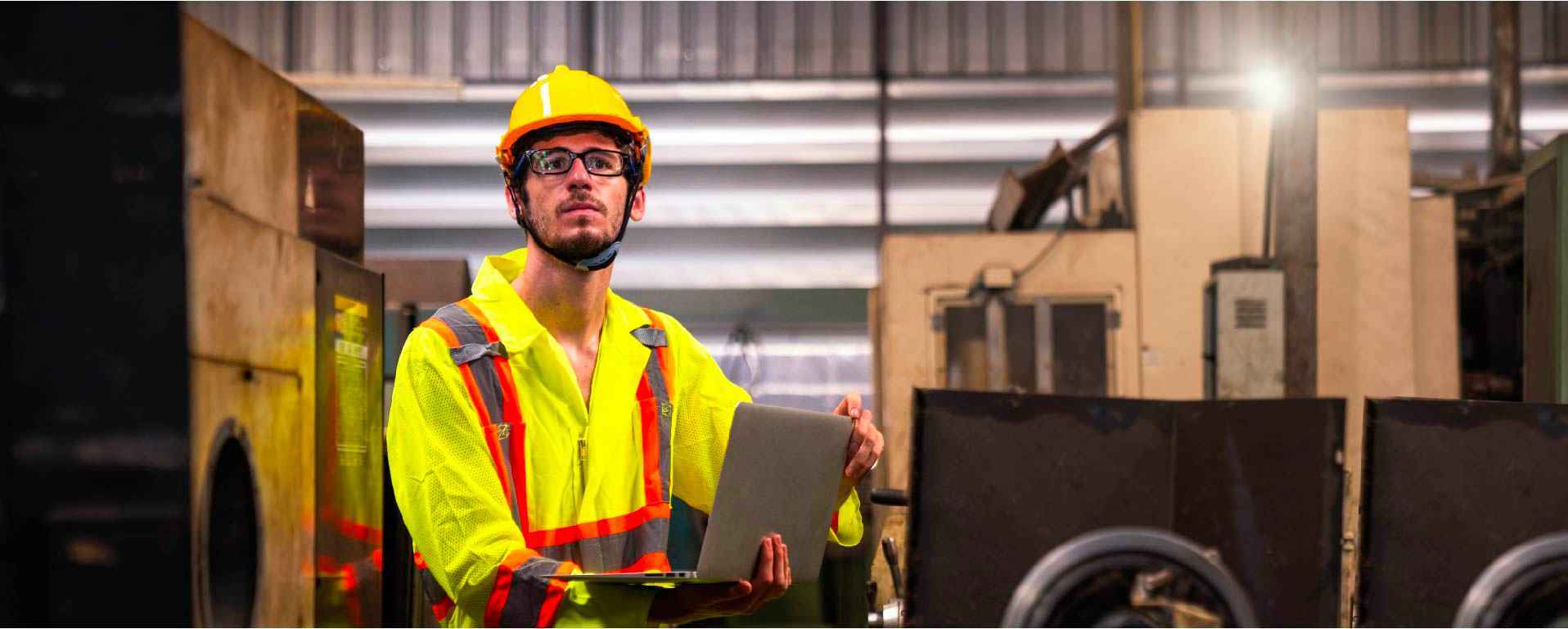
What is Preventive Maintenance? A Practical Guide
Learn all about preventive maintenance in this comprehensive guide! Discover its benefits, implementation strategies, and key considerations.
Solutions
Workplace Management Solutions
Real Estate Management Solutions
Maintenance Management Solutions
Energy Management Solutions
Engineering Document Management Solutions
Asset Management Solutions
Automate campus scheduling for classes, meetings, and exams with our EMS software.
Plan and manage conferences effortlessly with EMS software to impress guests and streamline operations.
Boost workplace flexibility and maximize space use with seamless desk and room booking.
Organize workplace or campus events smoothly, creating memorable experiences.
Optimize workspace, manage allocations efficiently, and reduce costs with our space management solutions.
Deliver projects on time and within budget by improving communication, collaboration, and efficiency with our software.
Streamline lease accounting for ASC 842, IFRS, and GASB compliance.
Manage leases efficiently by tracking key dates, analyzing costs, and ensuring compliance.
Centralize data and analytics for better insights, faster negotiations, and revenue growth.
Centralize facility and asset maintenance, automate work orders, and ensure compliance with our CMMS software.
Extend asset life, reduce downtime, and prevent costly repairs with data-driven monitoring.
Prevent equipment failures and extend asset life by detecting and addressing issues early.
Make sustainable, cost-efficient energy decisions by monitoring and optimizing power consumption.
Remotely monitor and control equipment with real-time data to predict issues, boost efficiency, and reduce downtime.
Easily share and collaborate on documents, creating a single source of truth for engineers and contractors.
Manage and analyze assets across their lifecycle to schedule maintenance, reduce downtime, and extend lifespan.
Improve visibility, automate work orders, and ensure compliance for efficient facility and asset management.
Resources
Browse our full library of resources all in one place, including webinars, whitepapers, podcast episodes, and more.
Support
Looking for access to technical support, best practices, helpful videos, or training tools? You’ve come to the right place.
About Accruent
Get the latest information on Accruent, our solutions, events, and the company at large.

What maintenance strategy -- or combination of strategies -- will work most effectively for your organization? Here are the key differences and distinctions.
When it comes to maintenance, your organization is either taking a proactive approach or a reactive one.
It’s been proven that proactive strategies, like preventive and predictive maintenance, can improve a facility’s bottom line in many ways: lowering maintenance costs, improving asset reliability and giving a 360-degree view of performance, just to name a few.
However, a majority (66%) of organizations still rely on reactive maintenance practices to keep their operations going.
What is Reactive Maintenance? Reactive maintenance is when maintenance is only conducted when equipment needs fixed or attention or a Run-to-Failure mode. This approach can cause more labor, time and money to be spent to keep equipment working correctly.
Up front, run-to-failure seems like the easiest, most cost-effective strategy to implement. It requires little planning and minimal staff, and there’s no need to train technicians on prevention methods or asset tracking software.
Over time, though, the inconsistency of the run-to-failure method will take a toll on your maintenance budget and overall productivity. This approach makes it hard to anticipate the required labor and parts needed for a repair, resulting in unexpected expenses associated with product loss, overtime labor and spare part storage/purchasing.
What is Preventative Maintenance? Preventive maintenance involves planned, regularly performed tasks to check, clean and maintain assets to reduce failure and downtime.
With this maintenance method, you want 80% of your maintenance initiatives to be planned and only 20% to be unexpected. Doing so will make your assets more reliable, which can positively impact productivity and profitability.
However, getting to an 80/20 ratio does take a significant amount of effort to schedule, prepare and delegate tasks. Preventive maintenance also doesn’t consider an asset’s wear, which can cause facilities to conduct excessive maintenance when a piece of equipment might need replacing.
Instead of following a schedule of planned maintenance tasks, predictive maintenance is a strategy where tasks are conducted based on trends within asset data.
This method requires expert observation and specialized tools, such as vibration analysis and thermal imaging, to collect data on the equipment’s efficiency and wear, making the upfront costs of implementation expensive.
However, this data-driven approach to predictive maintenance gives facility managers and technicians full visibility of an asset’s performance. The strategy also uses algorithms to predict when an asset may fail, ensuring downtime only occurs before an unavoidable failure. This can reduce product loss and increase efficiency, directly improving a company’s profitability.
There’s no right or wrong approach to proactive maintenance. Choosing between a preventive or predictive strategy is up to the needs of your facility and your resources for purchasing and maintaining the required technology.
The major difference between the two methods is the amount of downtime involved.
Preventive maintenance relies on planned tasks that are scheduled based on time passed or sensory triggers. Typically, these tasks involve shutting down and disassembling equipment, like for an oil change or applying lubrication.
Predictive maintenance, though, uses algorithms to identify trends in asset data and predict when failure will occur, allowing maintenance teams to prepare spare parts, productivity alternatives and labor required ahead of time. This method typically collects real-time data through sensors and specialized tools, meaning predictive maintenance usually occurs while equipment is operating.
Although the execution tactics are extremely different, both methods can be used together for a well-rounded maintenance strategy that expands your asset’s life-cycle to its fullest potential.
Preventive and predictive maintenance have similar objectives: to make regular maintenance more routine and allow facilities to improve their bottom line.
Whether you mix both methods for a fully developed maintenance routine, or use one as your budget allows, implementing a proactive maintenance strategy can lead to continuous improvement, increased asset uptime and reduced spending on unexpected repairs.
Author Bio:
Elizabeth is an editor with Better Buys, a trusted source of maintenance software news and research. Follow her at @ElizMazenko for more on enterprise software and related technology research.
Learn all about preventive maintenance in this comprehensive guide! Discover its benefits, implementation strategies, and key considerations.
Explore three IoT strategies that improve processes and efficiency using maintenance connection software.
Explore Accruent's guide to preventive maintenance in food services. Discover effective strategies to improve efficiency and lower operational costs.
Subscribe to stay up to date with our latest news, resources and best practices